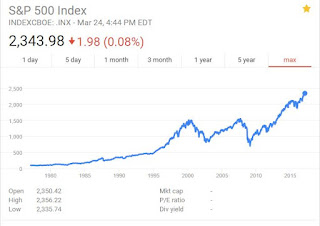My decision to sell PICK. Was it unwise? Only time will tell.
The figure above shows around when I bought shares and the last point shows my exit point for several of the shares bought.
PICK is the stock symbol for iShares MSCI Global Metals & Mining Producers ETF. Its current value as of yesterday’s close was $32.57, and its one-year total return is 27%. However, its historical returns are negative – see below.
I choose to purchase PICK for the fund because its stock price was at a low and produced high dividends. To make my decision to sell PICK, I used my portfolio control algorithm, implemented in a Google Sheet, to make the decision for me. My assumptions are a 50% probability that the stock may go up/down, and that I have a max to initially invest of $1600 in PICK – and I want to make a decision once a month. The algorithm is investment conservative – e.g., avoid losses. See figure below which compares the average return of the conservative method verse a lump sum investment in PICK.
The algorithm running on historical data made the following buy/sell decisions.
Date
|
Decision
|
Shares / Total
|
Portfolio Value / Cash
|
09/01/2015
|
Buy
|
42 / 42
|
$1600 / $809
|
01/01/2016
|
Buy
|
8 / 50
|
$1439 / $703
|
04/01/2016
|
Sell
|
6 / 44
|
$1820 / 708
|
11/1/2016
|
Sell
|
7 / 37
|
$2047 / 872
|
01/01/2017
|
Sell
|
4 / 33
|
$2168 / 1077
|
Based on this analysis, I decided to sell several shares to reach 33 shares in my fund’s holding. I still have fractions of shares in this account. Therefore, I will continue with dividend reinvest with PICK until I approximate an even share amount.


























